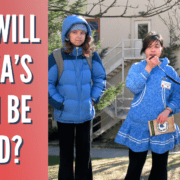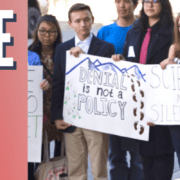Remembering Forward: The Just Transition Summit Recap
This past weekend the Alaska Just Transition Community held the second statewide summit – Nughelnik: Remembering Forward – coming together on Dena’ina Land to reflect on the past two years, heal, look ahead, and center the knowledge and lessons held here for generations. The three days were an invigorating experience, showcasing inspiring work already being led in local Alaskan communities. It was a nonstop sharing of ideas, connection, optimism, and plans for how to build the world we want to see. The summit was juxtaposed with national tragedies, instances of violence that only highlighted the need for the event’s message and movement of a Just Transition to be held at a national and global level.
The Alaska Center team was grateful to join partners Native Movement, Fairbanks Climate Action Coalition, Native Peoples Action, Alaska Community Action on Toxics, Alaska Public Interest Research Group, Alaska Poor People’s Campaign in supporting and co-hosting this year’s summit, joined by so many other incredible individuals and groups.
This summit illustrated the importance of direct action, community care, and the intersectional approach we must use to solve our communities’ collective problems.
Vivian Mork shared a powerful message on healing, a message that resonates through this week-that “destination healing” is a myth. It’s a process, an approach, a practice, and yet not something to be done alone: “Indigenous healing is not just being responsible for my own healing, but going back and healing with the community.”
We drew lessons from the stories and perspectives of speakers within the labor movement. Particularly those who spoke about their personal history of organizing and the labor movement’s long history here in creating and grounding the fight for workers’ rights.
Two panels facilitated by Interior Organizer Alyssa Quintyne on the Relationship of Reciprocity, and Black Leadership in Alaska, centered the perspectives of first-generation Americans and immigrant families; and what a Just Transition looks like within the Black community in Alaska.
Alaska Youth for Environmental Action (AYEA) staff Shanelle Afcan and Marlowe Scully, guided a youth contingent through their Summit experience. AYEA alum Lauryn spoke on a panel reflection for day 2, garnering an incredibly enthusiastic response on her call for Alaskan youth–the leaders of tomorrow–to get involved today.
We must also remember that our approach matters as we work towards a more thriving, just, and sustainable Alaska for future generations.
“If all we do is fight against what we don’t want, we will learn to love the fight… We must actually organize ourselves in a different way; not to simply make demands of existing structures of power, not to simply decry what we don’t like, but to actually, together, in community, organize ourselves to directly meet our needs.”
Gopal Dayaneni, Alaska Just Transition Keynote, May 21
We’ll leave you with this intriguing question from Dayaneni’s keynote, “What if we’re winning, and we don’t know it?” As we shift back into our day-to-day routines, let’s carry that optimism with us and let it fortify our collective efforts to shape the Alaska and the world we envision.









